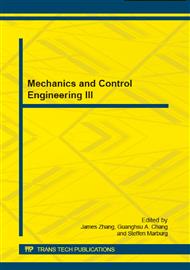p.137
p.143
p.148
p.154
p.161
p.170
p.180
p.186
p.190
Control Techniques to Directly Parallel Line-Side Converters for Wind Energy System
Abstract:
The direct paralleled converters can increase the power rating, reliability, efficiency, as well as decrease the cost and current/voltage ripples which are suitable for high power converters. However, when converters are in direct parallel, the circulating currents will be generated automatically. This will result in high current distortion which causes the line inductors saturation and damage the power switches; and therefore overall performance of the system will be degraded. This paper purposes a zero sequence current control technique to reduce the circulating current in directly parallel line-side converter of the wind energy conversion system. The case studies are carried out on a 2 MW wind turbine to investigate the effects of non-identical line inductors and PWM carrier phase shift of each converter to the circulating current. The simulation results confirm that zero sequence current controllers that can reduce the zero sequence current in any conditions. The dynamic responses of the direct parallel converters and a single converter are nearly the same but the direct parallel converters have better current ripple and THDi.
Info:
Periodical:
Pages:
161-169
Citation:
Online since:
December 2014
Authors:
Price:
Сopyright:
© 2015 Trans Tech Publications Ltd. All Rights Reserved
Share:
Citation:


